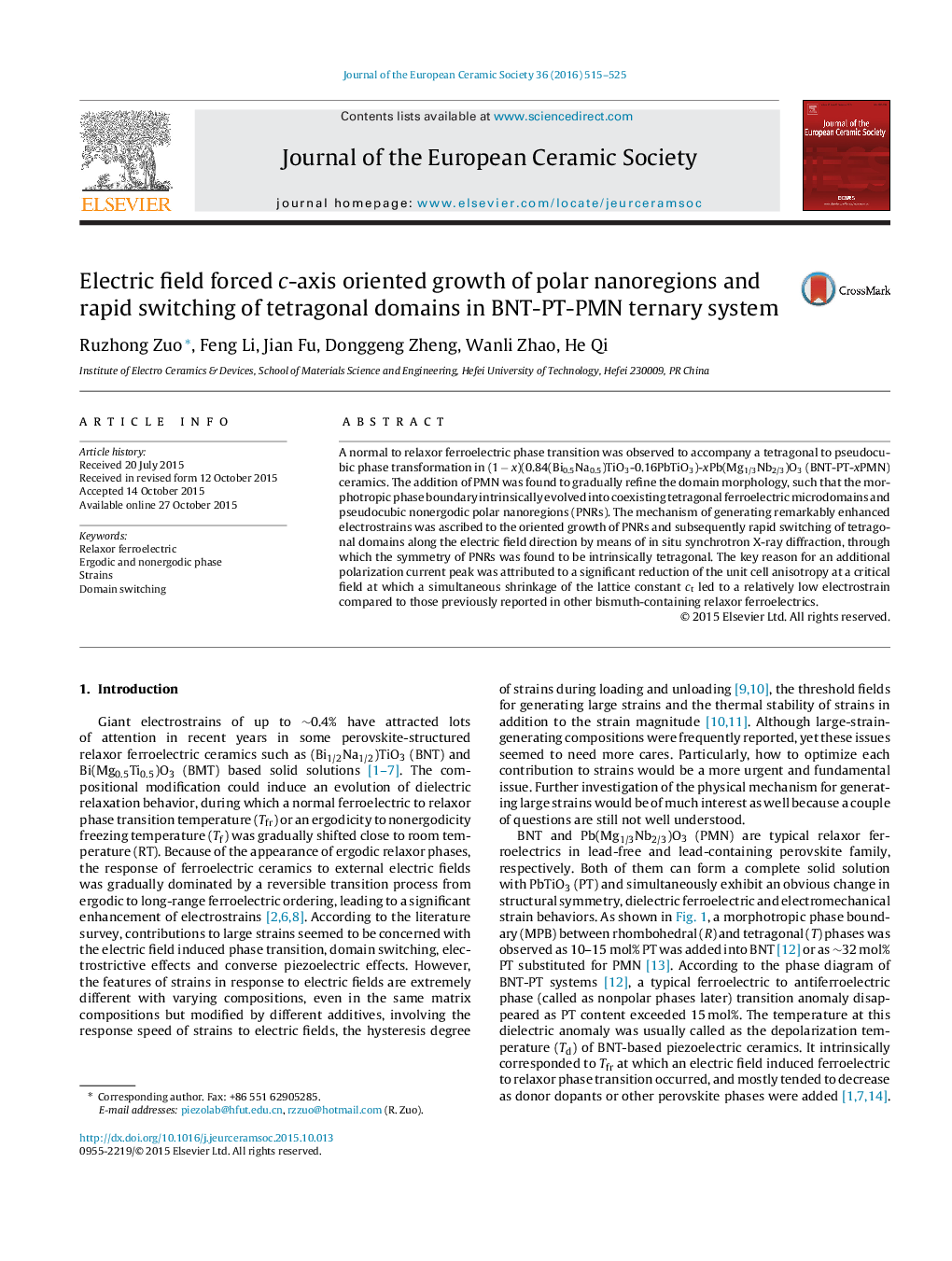| Article ID | Journal | Published Year | Pages | File Type |
|---|---|---|---|---|
| 10629404 | Journal of the European Ceramic Society | 2016 | 11 Pages |
Abstract
A normal to relaxor ferroelectric phase transition was observed to accompany a tetragonal to pseudocubic phase transformation in (1 â x)(0.84(Bi0.5Na0.5)TiO3-0.16PbTiO3)-xPb(Mg1/3Nb2/3)O3 (BNT-PT-xPMN) ceramics. The addition of PMN was found to gradually refine the domain morphology, such that the morphotropic phase boundary intrinsically evolved into coexisting tetragonal ferroelectric microdomains and pseudocubic nonergodic polar nanoregions (PNRs). The mechanism of generating remarkably enhanced electrostrains was ascribed to the oriented growth of PNRs and subsequently rapid switching of tetragonal domains along the electric field direction by means of in situ synchrotron X-ray diffraction, through which the symmetry of PNRs was found to be intrinsically tetragonal. The key reason for an additional polarization current peak was attributed to a significant reduction of the unit cell anisotropy at a critical field at which a simultaneous shrinkage of the lattice constant ct led to a relatively low electrostrain compared to those previously reported in other bismuth-containing relaxor ferroelectrics.
Related Topics
Physical Sciences and Engineering
Materials Science
Ceramics and Composites
Authors
Ruzhong Zuo, Feng Li, Jian Fu, Donggeng Zheng, Wanli Zhao, He Qi,
